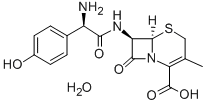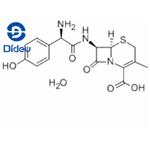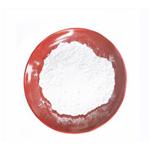
Cefadroxil
- Product NameCefadroxil
- CAS66592-87-8
- CBNumberCB4203658
- MFC16H17N3O5S.H2O
- MW381.41
- EINECS629-747-6
- MDL NumberMFCD01682047
- MOL File66592-87-8.mol
- MSDS FileSDS
Chemical Properties
| Melting point | 197 °C |
| storage temp. | Keep in dark place,Inert atmosphere,2-8°C |
| solubility | Slightly soluble in water, very slightly soluble in ethanol (96 per cen |
| form | Solid |
| pka | pKa 1.38(H2O t=20±2 N2atmosphere) (Uncertain); 7.35(H2O t=20±2 N2atmosphere) (Uncertain);10.10(H2O t=20±2 N2atmosphere) (Uncertain) |
| color | White to Off-White |
| BCS Class | 3 |
| InChIKey | NBFNMSULHIODTC-CYJZLJNKSA-N |
| CAS DataBase Reference | 66592-87-8(CAS DataBase Reference) |
| FDA UNII | 280111G160 |
| ATC code | J01DB05 |
Safety
| Symbol(GHS) |

|
| Signal word | Danger |
| Hazard statements | H314 |
| Precautionary statements | P280-P305+P351+P338-P310 |
| Hazard Codes | Xn,Xi |
| Risk Statements | 36/37/38-42/43 |
| Safety Statements | 26-36-36/37 |
| WGK Germany | 2 |
| RTECS | XI0337000 |
| HS Code | 2941906000 |



